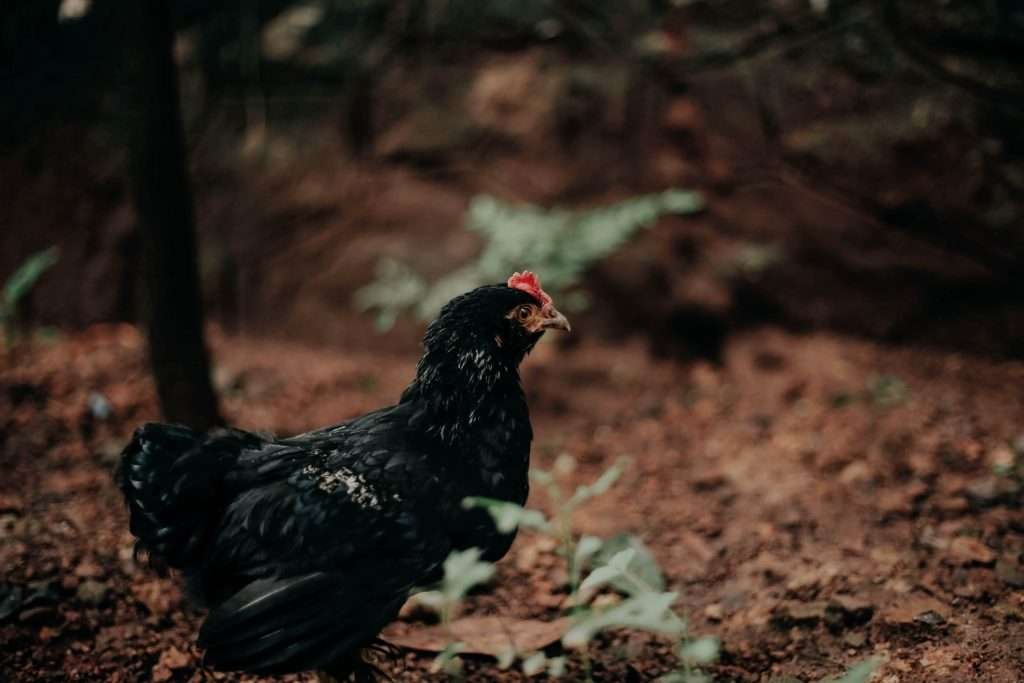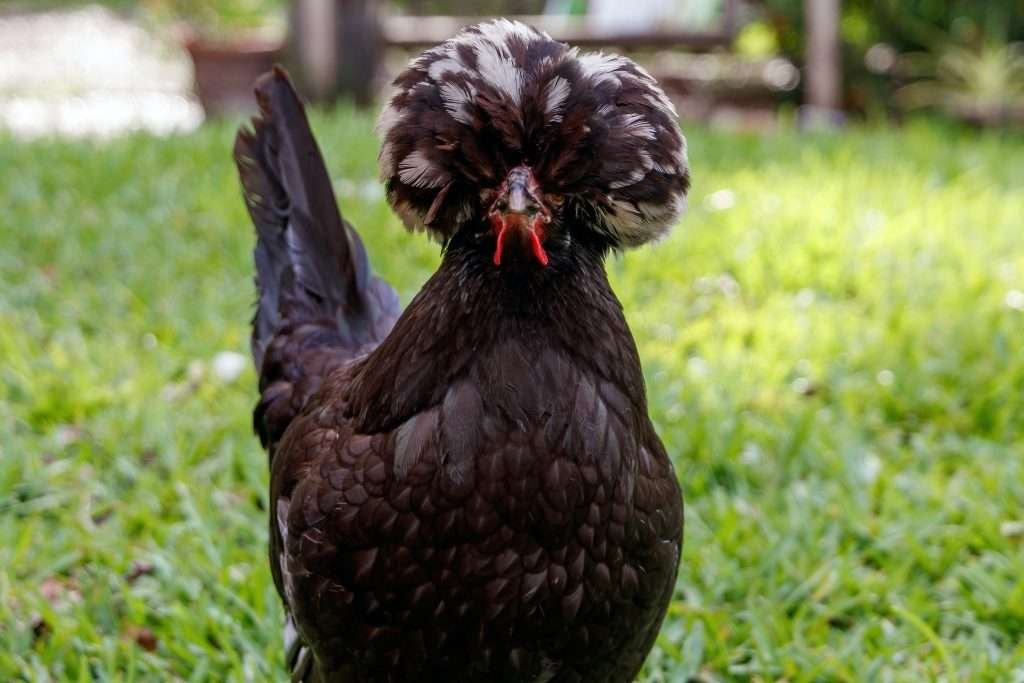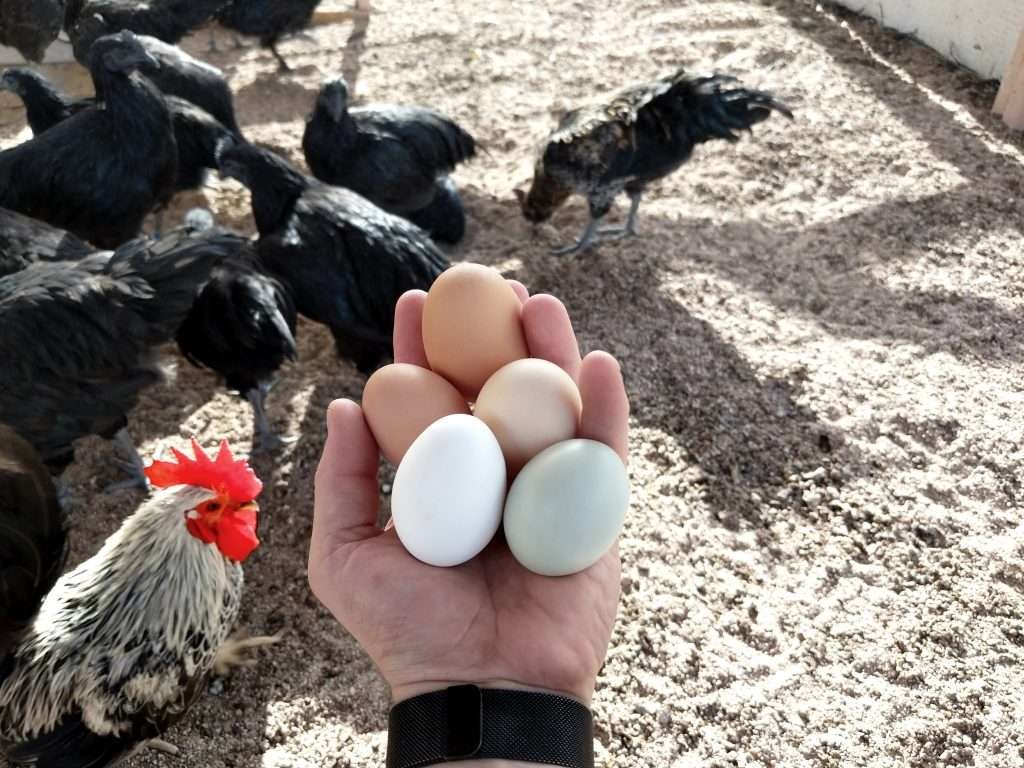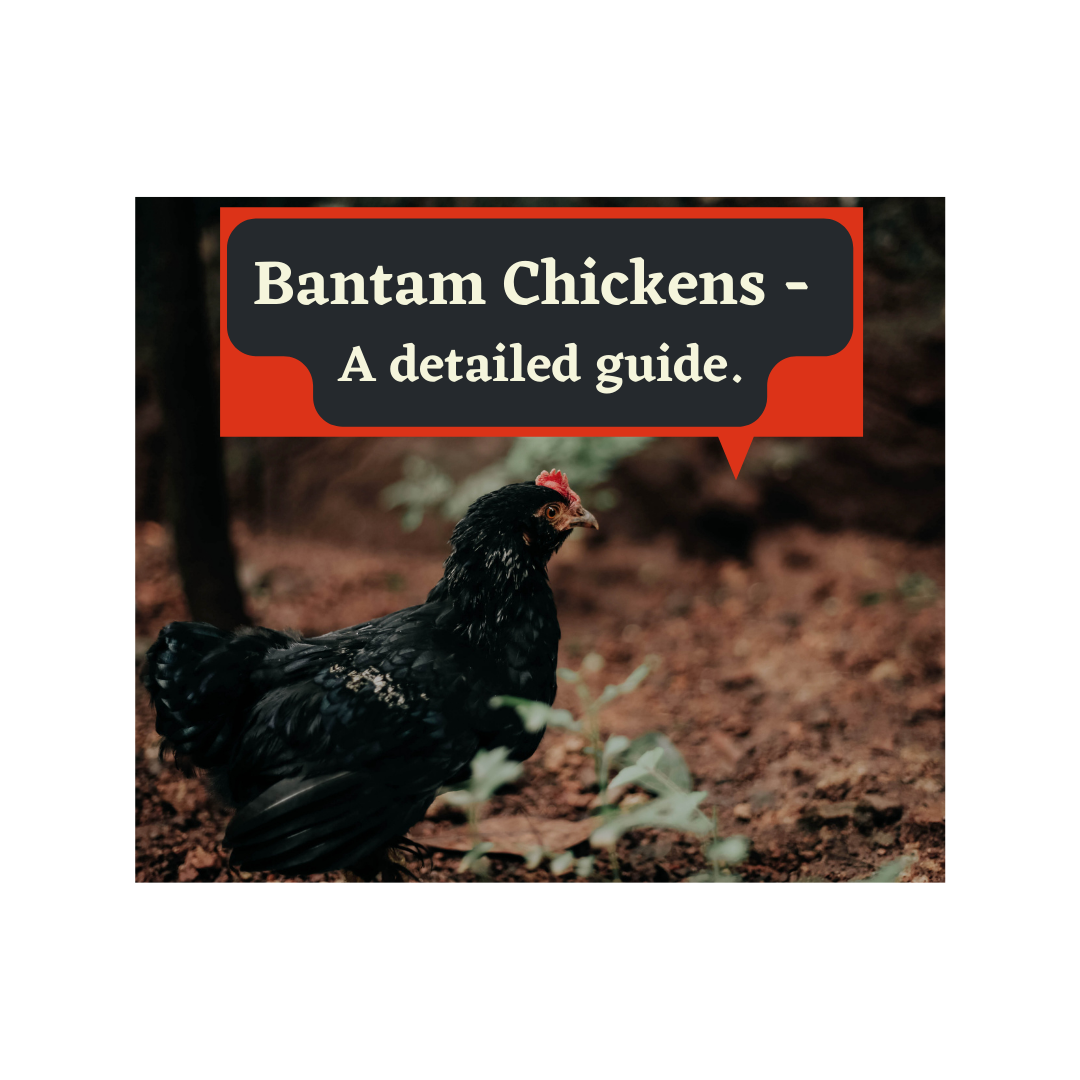Looking for a small chicken that has all the qualities that a full-sized chicken would? Then look no further than a Bantam chicken!

Bantams are compact size chickens that still maintain all the other beneficial functions that bigger breeds do.
The hardest part about choosing whether to get a Bantam chicken is what breed within this category of chicken to select!
Cackle Hatchery sell a large range of quality bantam breeds and also ship to your door. Check out their stocks and availability here.
Our comprehensive and detailed overview of this chicken type will inform you of the characteristics of Bantam chickens and enable you to decide whether they are the perfect choice for your flock.
What this article covers
This is a long article, so below are some quick links. Click any of them to go straight to that section – or just carry on reading for the full guide!
Overview of Bantam Chicken Characteristics
When should you get a Bantam Chicken?
Pros and Cons of Bantam Chickens
The 10 Most Popular Bantam Chicken Breeds
Special Considerations for Bantam Chickens
Space Requirements for Bantam Chickens
Cooping Bantams with Full Sized Varieties?
Shopping list of items needed to look after a Bantam Chicken
Overview of Bantam Chicken Characteristics
| Lifespan | Bantams will live as long as regular sized breeds |
| Egg Production | 3-5 eggs per week depending on breed |
| Egg Color | True to breed |
| Feather Color | Many – see breed in question |
| Weight | Depends on breed but can weigh as little as 0.88lb and upwards of 2.4lb |
| Child friendly | Yes |
| Broody | Depends on breed (i.e Silkies – yes) |
| Suitable for hot environments | Generally – yes |
| Suitable for cold environments | Can tolerate especially with supplementary heat |
| Suitable for wet environments | Depends on breed |
| Purchase price | Check Latest Price Here |
What Are Bantam Chickens?
Bantam chickens refer to small varieties of chickens, of which there are many breeds to choose from.
They can be 50 to 75% of the size of the larger breed. Many of the most popular breeds have bantam versions as well.
You can find several types but the most common are either true or miniaturized.
True bantams are those that do not have a regular sized counterpart. For example the Dutch breed which can only be found in bantam size.
Whereas miniaturized bantams (such as Cochins) have both bantam and regular sized varieties.
Bantam chickens often mimic their full-sized counterpart’s personality, traits and temperament. For example, a breed that is well known for egg laying (such as the Australorp), will also lay well as a bantam.
Different types of Bantams
There are four types of bantam chickens:
- Developed bantams
- Miniaturized bantams
- True bantams
- Booted bantam
True bantams True bantams are chicken varieties that only occur in the small size. True bantams are naturally small as opposed to the bantam breeds that have been deliberately bred from larger varieties. True bantam breeds include the Booted bantam, Nankin, Pekin, and Seabright.
Miniaturized bantams are chickens that were bred by humans from normal sized, pre-existing breeds. Examples include Cochins, Polish and Rhode Island Reds.
Developed bantams were made with greater input from human beings that includes cross-breeding several different chicken breeds to get specific results. These are not naturally occurring chicken breeds. However, many people do not even care about this distinction in the chicken breeding community because it’s so hard to track a breed’s origin.
Booted Bantams also known as the Dutch Booted Bantam. They have feathered feet and hocks, which are referred to as vulture hocks. They originate from Germany, The Netherlands, Great Britain.

When should you get a Bantam Chicken?
Bantam chickens are famous for being smaller and more compact versions of regular chicken breeds.
They are the best selection for those that want to keep chickens but do not have lots of space on their property. This may be the case if you live in an urban or suburban area and don’t have much room in your yard for full size poultry.
Getting Bantam chickens also allows you to keep more chickens compared to keeping bigger sized chickens. One full sized chicken is roughly three Bantam chickens!
They are also a great option for beginners and also those that have children to double up as pets.
Pros and Cons of Bantam Chickens
| Pros 👍 | Cons 👎 |
| ✔ Affectionate | ❌ Some breeds susceptible to disease (Silkie) |
| ✔ Great pet for kids | ❌ More susceptible to cold – especially Japanese and Dutch varieties |
| ✔ Long lifespan | ❌ Some breeds don’t do well in the wet (Silkie) |
| ✔ Friendly with other chickens | ❌ Smaller eggs |
| ✔ Many breeds to choose from | ❌ May escape easier than full size varieties |
| ✔ Don’t need much space | ❌ Some breeds can be broody |
| ✔ Don’t eat as much as full sized varieties | ❌ Prone to being bullied by full sized varieties |
The 10 Most Popular Bantam Chicken Breeds
10. Pekin
Also known as a miniature Cochin bantam, this breed is known to be adorable and cheeky.
They come in a variety of colors, including buff, white, silver, red and blue.
They are not the most prolific egg layers however, Pekin bantams make great pets due to their love of company and friendly nature.
9. Dutch Bantams
Dutch bantams have sweet and friendly personalities. However, they can also be a bit nervous and highly strung too!
They have several color options, including black, silver, blue, and lavender.
They will generally lay around 2 eggs per week and are true bantam chickens. They are beautiful chickens and have strikingly good looks. Dutch bantams can also be broody and make fantastic natural and foster mothers.
8. Serama
The Serama chicken is so small that it has the title of the smallest chicken in the world! These Malaysian Bantams are really cute and look like toy chicken soldiers.
They are very friendly, calm and not very noisy. They also docile too and very easy to handle.
They lay approximately 4 eggs per week.
7. Wyandotte
Wyandotte chickens are a very popular choice due to their docile and friendly nature.
You can find them in silver laced, golden laced, black, buff, blue, and silver penciled.
Wyandotte chickens are known as great egg layers, and lay approximately 200 large eggs per year. What’s even better is that they generally lay through the winter months as well as summer, whereas other breeds tend to cease egg production.
They love to roam and forage outside but are also good at tolerating confinement.
6. Brahma
Brahma bantams are known for being friendly and sweet and make a great choice for an urban environment.
They are gentle and tame birds and are hardy in cold environments. You can find them in several different colors including light, buff, white, and black.
These little chickens are great egg layers and can manage around 200 eggs per year.
5. Cochin
Cochin bantams are extremely popular chickens.
They have feathered feet and are fairly good egg layers.
Just like their full sized counterparts, they have a very gentle and sociable temperament. They are known to be cuddly with their owners, which is great for families with children.
They come in many different colors including: red, blue, brown, buff, black, lavender, barred, and white.
Overall Cochins are best for those looking for a friendly and loving companion that can also lay a decent amount of eggs.
4. Easter Egger
This hybrid type of bantam is known to be weather hardy, family friendly and most popularly known for their unique colored eggs – generally blue and green colored eggs to be exact! They have also been known to lay pinkish eggs and have been referred to as rainbow layers!
They will lay full sized eggs with a quantity of around 3-4 eggs per week.
They are a fantastic all round choice for a bantam variety.

3. Polish
A sight to behold due to their unique looks having a fluffy featured head, these bantams are a popular choice.
Polish bantams are mostly kept due to their ornamental characteristics but are also decent egg layers too.
They have a sweet friendly temperament so make a good choice as a family pet. This breed comes in a variety of different colors such as golden, silver, white, bearded, white crested black, and black crested white.
2. Belgian d’Uccle
A true bantam chicken with a sweet personality! They are very friendly and great with kids.
They are a lot alike the Booted Bantam only they have a beard where the Booted Bantams do not. They both have feathered legs that make them look like they are wearing fluffy boots.
This type of bantam comes in a variety of colors with the Mille Fleur being the most popular choice. They lay around 2-3 tiny eggs per week.
1. Silkie
The Silkie is arguably the most well known and in demand of the bantam chickens.
They have a unique appearance being very fluffy and cute and make great pets for children as they are cuddly, friendly and playful.
Silkies are not known for being productive egg layers though and don’t do well in very cold or wet environments due to their feathers. Apart from that they are a popular choice for chickens to keep as a backyard family pet.
Special Considerations for Bantam Chickens
Due to their small size bantam chickens have a higher metabolic rate than normal chickens and will tend to feel colder. Many breeds (such as the Dutch and Japanese bantam) will struggle in cold weather. You should consider this if you are thinking about getting bantam chickens and live in an area that may get extremely cold during winter. Consider buying a chicken coop heater to keep them warm and comfortable.
Bantam chickens are also decent flyers so build or buy their coop and run a little taller so they can stretch their wings. If you live in the suburbs you may need to clip their wings to stop them flying outside of the run.
They are escape artists and due to their size can easily slip outside of small holes and breakages in your coop or run. It is important to make sure that while raising bantams you inspect their coop and enclosed run for damages so they can not escape.
Consider a chicken safe insecticide spray to apply to their coop every six weeks to kill and prevent mite and lice infestations. Worming with a broad-spectrum wormer should be carried out every three months.
Space Requirements for Bantam Chickens
Each bantam chicken should have at least four square feet inside the chicken coop and at least two square feet in the run.
As mentioned above, bantams can fly, so extra height should accommodate for this in their coop and run. Putting their roosts higher than usual allows them more flying space.
Cooping Bantams with Full Sized Varieties?
It is not recommended to mix bantams with full sized poultry.
Bantam chickens are often bullied and picked on by the larger birds in the flock due to their size.
If you do decide to keep them in the same flock as full sized birds, then make sure to give them plenty of safe space the larger birds cannot reach so that they can hide when they feel threatened or uncomfortable.
Feeding Bantam Chickens
For all chickens to lay effectively they need to be well fed. They should have access to layer pellets throughout the day, preferably in a hanging feeder to keep it clean and out of reach of rats and mice, as well as daily vegetable scraps and grit.
If layer mash is being used, soaking it the night before feeding makes it easier to digest so more nutrients can be readily absorbed.
Fresh water needs to be available at all times and should be provided in a hanging water dispenser off the ground to keep it clean.
Bantams in an egg-shell!
Bantams have all the great qualities that their full-sized counterparts do.
If you are wanting chickens but have a smaller space to keep them, then bantam chickens are a great choice.
There are many different types of bantams to choose from which allows for creating a unique flock!
We hope you have learned alot about keeping Bantam chickens and no doubt if you decide to add them to your flock your experience is going to be a rewarding one!
Bantam Chickens For Sale
Cackle Hatchery supplies and delivers over 200 varieties of chicken breeds. Check out current supplies and prices for Bantam Chickens here.
Shopping list of items needed to look after a Bantam Chicken
We have put together a shopping list below to help ensure your chickens are kept in an optimal health condition. Check out our list here:
- Chicken coop
- Wood shavings bale
- Feeder
- Waterer
- Perch
- Nesting Box
- Layer pellets
- Chicken scratch/grain
- Shell grit
- Chicken Safe Disinfectant
- Coop cleaner
- Chicken dust
- Wormer
- Multivitamin
- Calcium supplement
- Insecticide
- Mealworms
Chicken Care Shopping List
Are you looking for a shopping list of everything you need when caring for your precious flock? We have put together an easy reference of items for your convenience.

